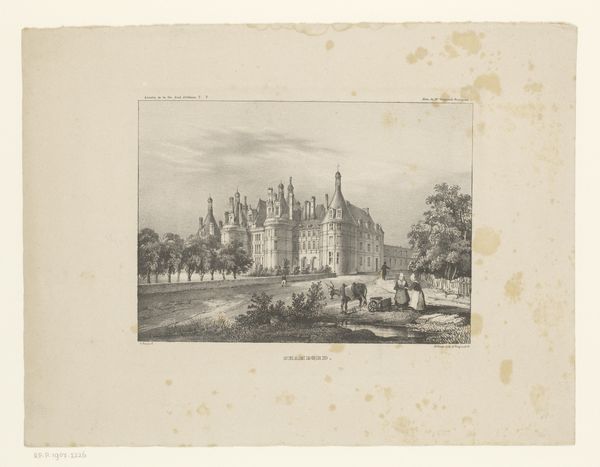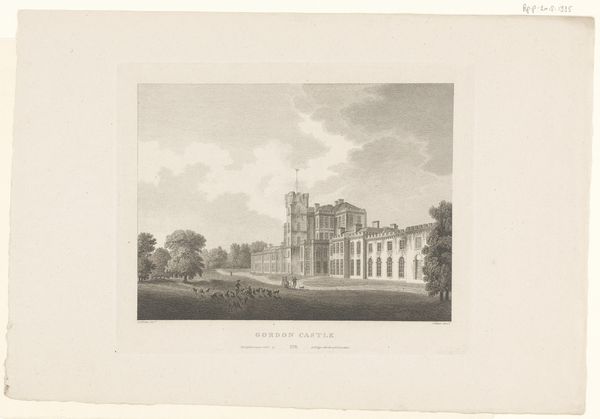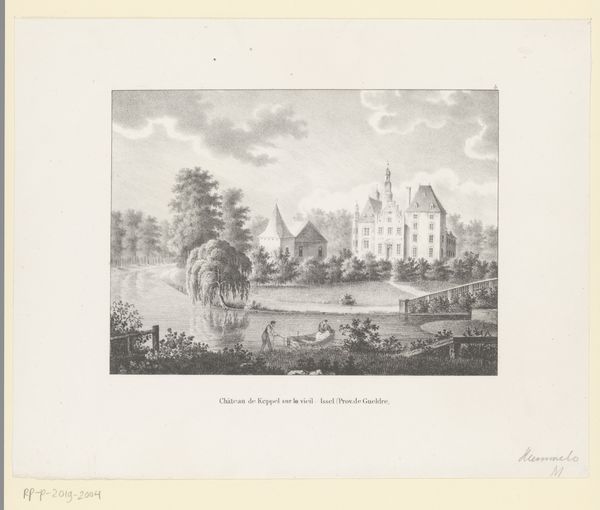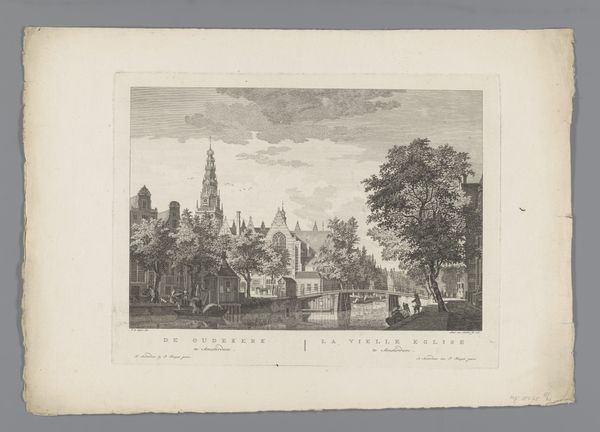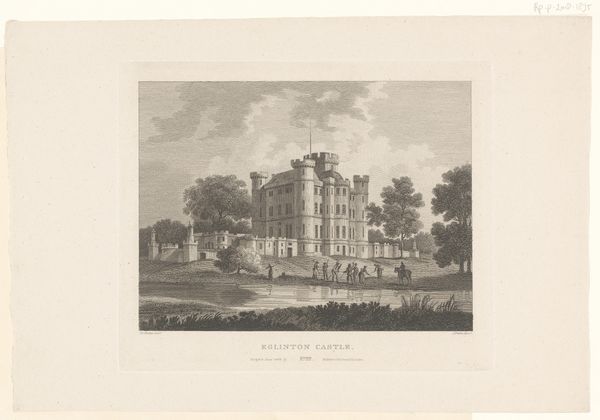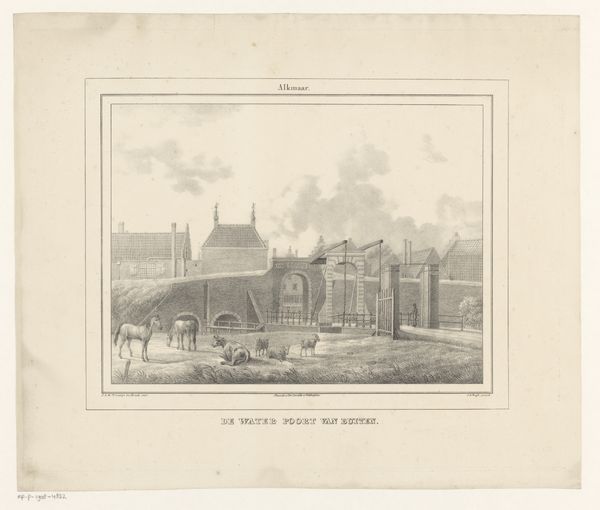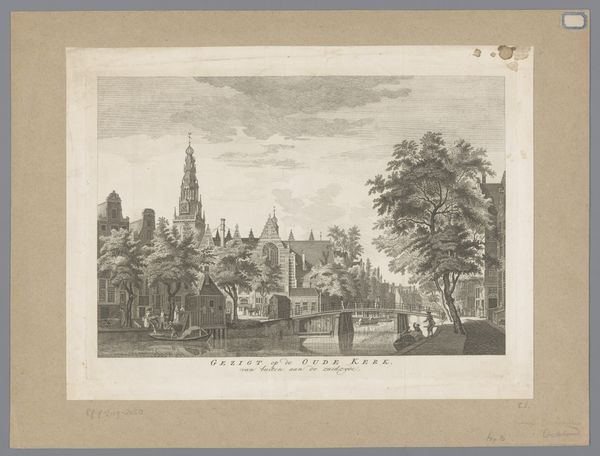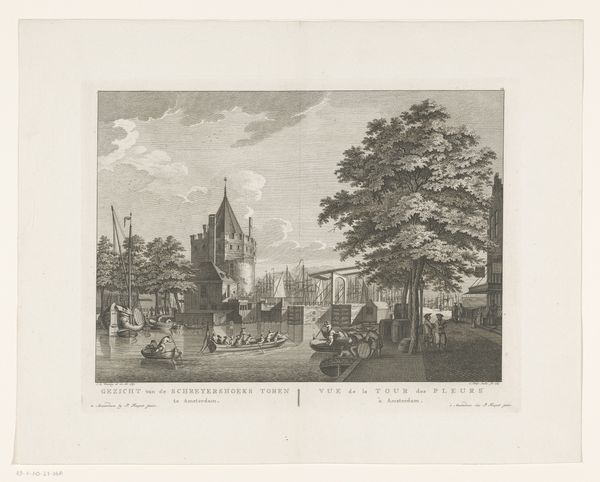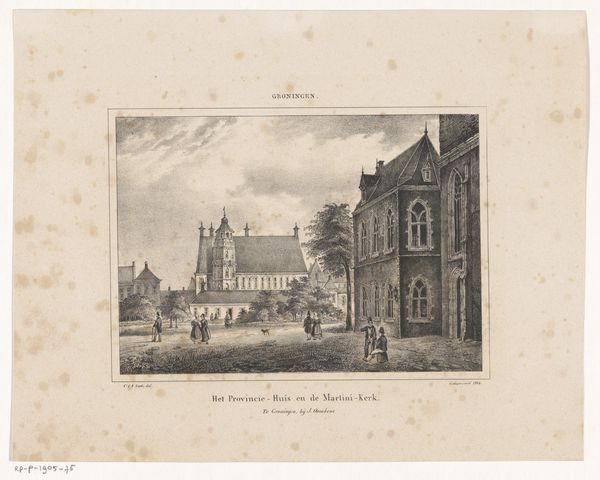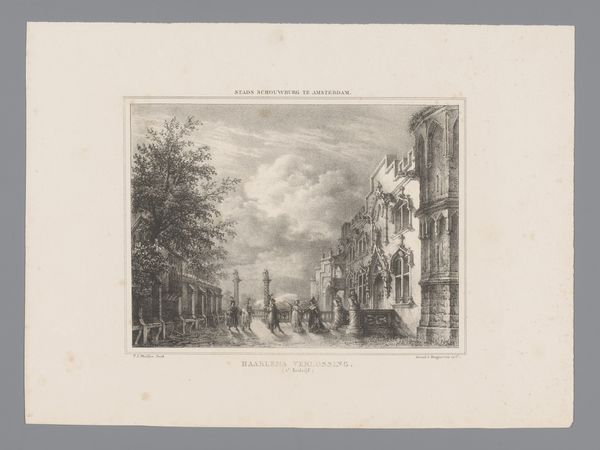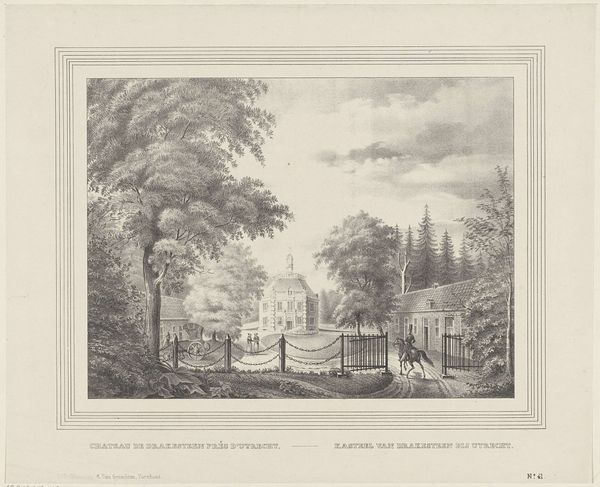
drawing, lithograph, print, etching, paper
#
drawing
#
lithograph
# print
#
etching
#
landscape
#
paper
#
classicism
#
united-states
#
monochrome
Dimensions: 160 × 224 mm (image); 192 × 252 mm (chine); 295 × 390 mm (sheet)
Copyright: Public Domain
Curator: What a somber rendering. The texture feels almost like a memory fading. Editor: Indeed. This lithograph, etching, and print on paper from 1826 depicts "Residence of Lord Byron, Newstead Abbey," created by Rembrandt Peale. It's fascinating how Peale combined several printing processes, a testament to artistic experimentation. Curator: "Residence of Lord Byron" conjures notions of gothic romanticism and brooding melancholy, typical of Byron's public persona. Even the monochrome lends itself to this aesthetic. The Abbey itself seems like a character, full of secrets. Editor: Absolutely. The means by which it was printed give us insight into mass consumption and memorialization. Lithography allowed for more widespread reproduction and accessibility. It invites consideration: what kind of paper was available, what labor was used to create the matrix for each reproduction? It's a question of wider audiences gaining access to Byron's mythical life. Curator: Thinking about visual symbols, the decaying grandeur speaks volumes. It resonates with a historical yearning—perhaps a romantic glorification of ruins and decay, similar to a "memento mori". Does this classicist lens speak to ideas of lasting legacies and mortality? Editor: Maybe. What does that association achieve though, versus simply producing likeness en masse? I wonder about the politics inherent in how image is consumed. Curator: That's an intriguing lens. Perhaps, Peale aimed to perpetuate Byron’s image within American visual culture. Byron, a figure of European high culture and moral ambiguity, would have certainly carried immense symbolic weight in early America. Editor: We should consider more deeply the circulation of such images: who was consuming them, and what specific skills were required in its printing to deliver the intended social and political impact of this image. Curator: Thinking of that impact on the consumer and thinking more widely: this visual strategy—an aesthetic so aligned with darkness and ruin—becomes an enduring cultural image associated with Byron. Editor: On the other hand, thinking about paper and distribution opens avenues to understand the visual economy that allowed this print and others like it to gain meaning and shape visual taste. Curator: It's intriguing how different modes of inquiry unlock layered ways of perceiving how an image can both transmit established cultural mythologies but can also give a foothold to examine labor and commerce, impacting social and historical understandings of celebrity and access.
Comments
No comments
Be the first to comment and join the conversation on the ultimate creative platform.
